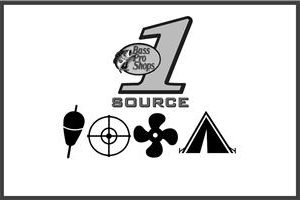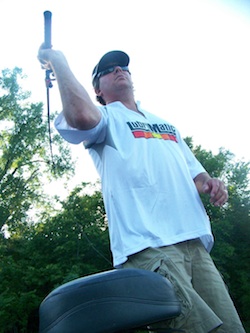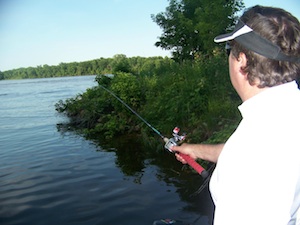
 I live in Minnesota, a state where we’re blessed with thousands of lakes, rivers and streams. Most all of the bodies of water in our state offer spectacular fishing opportunities. Because we have so many lakes in Minnesota our rivers don’t get near the pressure that our lakes do.
I live in Minnesota, a state where we’re blessed with thousands of lakes, rivers and streams. Most all of the bodies of water in our state offer spectacular fishing opportunities. Because we have so many lakes in Minnesota our rivers don’t get near the pressure that our lakes do.
I spent many days as a youngster fishing the banks of the Grey Cloud backwaters on the Mississippi River. As kids, we’d fish for whatever was willing to bite, but mostly carp and white bass back then. The river didn’t support near the quality fish then that it does now. The Mississippi has managed to clean itself up a bit from the 70’s until now, thanks to clean water regulations, making it a viable destination for great fishing. Both largemouth and smallmouth bass are abundant and thriving on the Mississippi River now. Of course, some of the pools on the Mississippi are more productive than others.
If you’ve never fished on a river system before it can be a bit of a challenge. Rivers are probably the most difficult bodies of water to understand for novice anglers. The first glance at a topographical map can be a bit overwhelming because there is so much real estate on any given pool, it seems as though it would take weeks to figure out. I’ll try to make bass fishing rivers seem a little less scary to those anglers that might not want to deal with the perceived difficulty of river fishing.
One of the first places I like to look for bass are points adjacent to those areas leading to and from the backwaters to the main or secondary channels of the river. These points are set up parallel to the current. As the river levels go up and down, fish will move in and out of these backwater areas as they see necessary and to follow their food source (bait).
One of the many variables you’ll be dealing with on a river is current. CURRENT IS YOUR FRIEND. Current will allow you, in many cases, to target the likely areas that bass will set up and hold. Bass will always face into the current and be looking upstream. In many cases they’ll hold just out of the current and go into the current to pick off a quick meal as it comes by. The front end of the point, that area facing up stream, is typically deeper than the back end of the point. The front of the point can be a “cut” bank and more productive than the back end of the point. The back end of the point is generally longer and tappers off slowly into deeper water. Bait presentation plays a large role in your success here. Don’t be afraid to put your bait inches from the bank and slowly move it out. Remember, if there is a “cut” bank situation, the fish could conceivably be inches away from or under the bank. If you work your way up or down the river, you can target these points adjacent to backwater areas to reduce the acreage of the water you are fishing. I’ll generally use an arbitrary distance of 50 yards on each side of the given point that I’m focusing. Depending on the outcome, my results will help determine whether or not I’ll slow down or speed up my presentation, or increase or decrease the distance that I’ll move up or down the point. If I’m not productive, I’ll move on to the next point. Repeat.
If you work your way up or down the river, you can target these points adjacent to backwater areas to reduce the acreage of the water you are fishing. I’ll generally use an arbitrary distance of 50 yards on each side of the given point that I’m focusing. Depending on the outcome, my results will help determine whether or not I’ll slow down or speed up my presentation, or increase or decrease the distance that I’ll move up or down the point. If I’m not productive, I’ll move on to the next point. Repeat.
Bass on rivers behave a little different on a river than in a lake. As the water rises and falls and the current increases and decreases, bass will move to follow their food source. One day they may be hanging out on one side of the point, the next day the other. So don’t be afraid to move around and change up the presentation.
I’ll always have three rods on my deck with the following set ups: Bandit 100 series, Flamin lure jig (either 3/8 or ½ depending on the current) and a shaky head with 6” Bass Pro Shops Stik-O-Worm.
That’s all I have time to write for now. Until next time, Good Luck!
Written by Dan Bonneson
- 6028 views

